
Dr. Warren R. Brown
wbrown @ cfa.harvard.edu
(617) 496-7905
60 Garden St, Mail Stop 20, Cambridge, MA 02138
I am an astronomer at the Smithsonian.
I am best known for my Hypervelocity Star
discoveries, stars ejected from our galaxy by the Milky Way's central massive black
hole. With Mukremin Kilic, I am leading a targeted survey for merging pairs of white
dwarfs that may one day explode as supernovae and that are currently the strongest
known sources of gravitational waves at mHz frequencies.
I chair the CfA OIR Time Allocation Committee
that oversees our use of MMT, Magellan, and FLWO
telescopes.
I direct the Smithsonian's Telescope Data Center,
a group that archives, processes, and distributes data from our telescopes
on a nightly basis. I also build new instruments for our
ground-based telescopes.
I am PI of the SAO Widefield InfraRed Camera
(SWIRC), a near-infrared imager for the MMT telescope that I took from proposal to commissioning
in 13 months, and PI of the the MMT Cam optical imager.
Hypervelocity Stars!
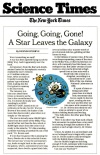 I discovered the first
hypervelocity star, a star whose extreme 1.5 million mph speed can be explained
only by a slingshot from the Galaxy's central black hole. The hypervelocity star is
an outcast, exiled to drift in the empty depths of space.
I discovered the first
hypervelocity star, a star whose extreme 1.5 million mph speed can be explained
only by a slingshot from the Galaxy's central black hole. The hypervelocity star is
an outcast, exiled to drift in the empty depths of space.
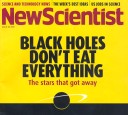 I have since discovered 16 unbound stars in a targeted survey, first
announced here.
I have since discovered 16 unbound stars in a targeted survey, first
announced here.
The two most fascinating aspects of hypervelocity stars are their
link to the central black hole, and the fact that they have traveled out over 200,000 light
years allowing us measure the dark matter that surrounds the Milky Way. To hear the big
picture, listen to the New Scientist podcast or the
American
Physical Society podcast.
I have been awarded Harvard's Bok Prize "for
outstanding work in the discovery of hypervelocity stars, a new class of objects in the Milky Way,"
and the Smithsonian Secretary's Research Prize for my "successful targeted survey for hypervelocity stars."
This Astronomy
Beat column published by the Astronomical Society of the Pacific describes
my hypervelocity star research to a general public audience.
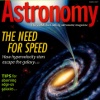 More recently we have how measured proper motions and trajectories for some of the hypervelocity
stars with the Hubble Space
Telescope, and have measured the age and flight times of other hypervelocity stars, as described in
Scientific American.
More recently we have how measured proper motions and trajectories for some of the hypervelocity
stars with the Hubble Space
Telescope, and have measured the age and flight times of other hypervelocity stars, as described in
Scientific American.
In 2015 I published an invited review article on Hypervelocity Stars in the Annual Review of
Astronomy and Astrophysics. I am pleased to be able to provide complimentary one-time access to
the PDF file of my Annual Review article for personal use.
This 2016 Physics Today
article gives the highlights.
Merging
White Dwarfs!
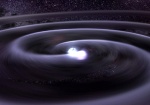 The Hypervelocity Star Survey has also discovered under-weight white dwarfs in
compact pairs: they are among the strongest known sources of gravitational waves
that will detected by the future LISA
gravitational wave observatory.
The Hypervelocity Star Survey has also discovered under-weight white dwarfs in
compact pairs: they are among the strongest known sources of gravitational waves
that will detected by the future LISA
gravitational wave observatory.
We discovered a record-breaking detached pair of white dwarfs with a 12.75 minute orbital period.
This system is a gravitational wave source 10,000 times stronger than the Hulse-Taylor
pulsar and will merge in less than 1 million years. It's rapid change in
orbital period will provide a fundamental
test of general relativity as described by
National
Geographic.
Selected Scientific Publications:
Hypervelocity Stars
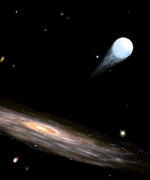
Gaia and the Galactic Center Origin of Hypervelocity Stars .pdf
ANNUAL REVIEW OF ASTRONOMY AND ASTROPHYSICS .pdf
Proper Motions and Trajectories for 16 Extreme Runaway and Hypervelocity Stars .pdf
MMT Hypervelocity Star Survey III: The Complete Survey .pdf
The Origin of HVS17, an Unbound Main Sequence B Star at 50 kpc .pdf
The Nature of Hypervelocity Stars and the Time Between Their Formation and
Ejection .pdf
MMT Hypervelocity Star Survey. II. Five New Unbound Stars .pdf
Binary Disruption by Massive Black Holes: Hypervelocity Stars, S Stars, and
Tidal Disruption Events .pdf
A Galactic
Center Origin for HE 0437-5439, the Hypervelocity Star near the Large Magellanic
Cloud .pdf
Runaway Stars, Hypervelocity Stars, and Radial Velocity Surveys .pdf
The Anisotropic Spatial Distribution of Hypervelocity Stars .pdf
MMT Hypervelocity Star Survey .pdf
HVS 7: a chemically peculiar hypervelocity star .pdf
Hypervelocity Stars: From the Galactic Center to the Halo .pdf
Hypervelocity Stars. III. The Space Density and Ejection History of Main Sequence Stars from the
Galactic Center .pdf
Hypervelocity Stars. II. The Bound Population .pdf
Hypervelocity Stars. I. The Spectroscopic Survey .pdf
Hypervelocity Stars: Predicting the Spectrum of Ejection Velocities .pdf
A Successful Targeted Search for Hypervelocity Stars .pdf
DISCOVERY OF AN UNBOUND HYPERVELOCITY STAR IN THE MILKY WAY HALO .pdf
Merging White Dwarfs
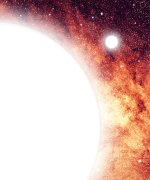
The Discovery of Two LISA Sources within 0.5 kpc
A 1201 s Orbital Period Detached Binary: The First Double Helium Core White Dwarf LISA Verification Binary
The ELM Survey. VIII. Ninety-eight Double White Dwarf Binaries
Discovery of a Detached, Eclipsing 40 Minute Period Double White Dwarf Binary and a Friend: Implications for He+CO White Dwarf Mergers
The Physical Nature of Subdwarf A Stars: White Dwarf Impostors
Most Double Degenerate Low Mass White Dwarf Binaries Merge
The ELM Survey. VII. Orbital Properties of Low-Mass White Dwarf Binaries
The ELM Survey. VI. Eleven New Double Degenerates
A new gravitational wave verification source
Radius Constraints from High-speed Photometry of 20 Low-mass White Dwarf Binaries
SDSS J0745: Discovery of a Metal-Rich and Tidally Distorted Extremely Low Mass White Dwarf
The ELM Survey. V. Merging Massive White Dwarf Binaries
Rapid Orbital Decay in the 12.75-minute WD+WD Binary J0651+2844
The ELM Survey. IV. 24 White Dwarf Merger Systems
Two New Tidally Distorted White Dwarfs
The ELM Survey. III. A Successful Targeted Survey for Extremely Low Mass White Dwarfs
A 12 MINUTE ORBITAL PERIOD DETACHED WHITE DWARF ECLIPSING BINARY
The Shortest Period Detached Binary White Dwarf System
The Binary Fraction of Low-mass White Dwarfs
The Merger Rate of Extremely Low Mass White Dwarf Binaries: Links to the Formation
of AM CVn Stars and Underluminous Supernovae
The ELM Survey. II. Twelve Binary White Dwarf Merger Systems
The ELM Survey. I. A Complete Sample of Extremely Low-mass White Dwarfs
The Discovery of Binary White Dwarfs that will Merge within 500 Myr
The Runaway White Dwarf LP40022 has a Companion
The Discovery of a Companion to the Lowest Mass White Dwarf
The Lowest Mass White Dwarf
Century Survey Galactic Halo Project
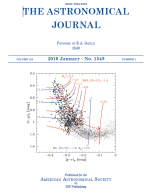
Stellar Velocity Dispersion and Anisotropy of the Milky Way Inner Halo
The Most Distant Stars in the Milky Way
Identifying Star Streams in the Milky Way Halo
The Mass Profile of the Galaxy to 80 kpc .pdf
Velocity Dispersion Profile of the Milky Way Halo .pdf
The Century Survey Galactic Halo Project III: A Complete 4300 sq. deg. Survey of
Blue Horizontal Branch Stars in the Metal-Weak Thick Disk and Inner Halo .pdf
The Century Survey Galactic Halo Project II: Global Properties and the Luminosity Function
of Field Blue Horizontal Branch Stars .pdf
Mapping the Inner Halo of the Galaxy with 2MASS-Selected Horizontal Branch Candidates
.pdf
The Century Survey Galactic Halo Project I: Stellar Spectral Analysis
.pdf
Galaxies
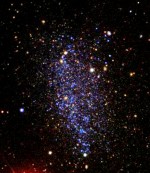
MMT Extremely Metal Poor Galaxy Survey I. An Efficient Technique to Identify Metal
Poor Galaxies
Stellar Velocity Dispersion of the Leo A Dwarf Galaxy
SDSS 0809+1729: Connections Between Extremely Metal-Poor Galaxies and Gamma-Ray Burst Hosts
V and R-band Galaxy Luminosity Functions and Low Surface Brightness
Galaxies in the Century Survey
UV Excess Galaxies: Wolf-Rayet Galaxies
Instrumentation
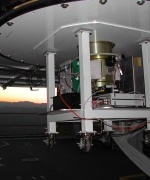
MMT and Magellan Infrared Spectrograph
Smithsonian Widefield
Infrared Camera .pdf
The
Cryogenic Refractive Indices of S-FTM16, a Unique Optical Glass for Near-Infrared
Instruments .pdf
A Detailed
Thermal Analysis of the Binospec Spectrograph
SPIE paper on my design recommendations for Binospec
Here is a link to my ancient cheat sheet, "Grad
Student Time-Saving Tools", that summarizes computer tips for
astronomers.
Before Grad
School
 I discovered the first
hypervelocity star, a star whose extreme 1.5 million mph speed can be explained
only by a slingshot from the Galaxy's central black hole. The hypervelocity star is
an outcast, exiled to drift in the empty depths of space.
I discovered the first
hypervelocity star, a star whose extreme 1.5 million mph speed can be explained
only by a slingshot from the Galaxy's central black hole. The hypervelocity star is
an outcast, exiled to drift in the empty depths of space.
 I have since discovered 16 unbound stars in a targeted survey, first
announced here.
I have since discovered 16 unbound stars in a targeted survey, first
announced here. 






